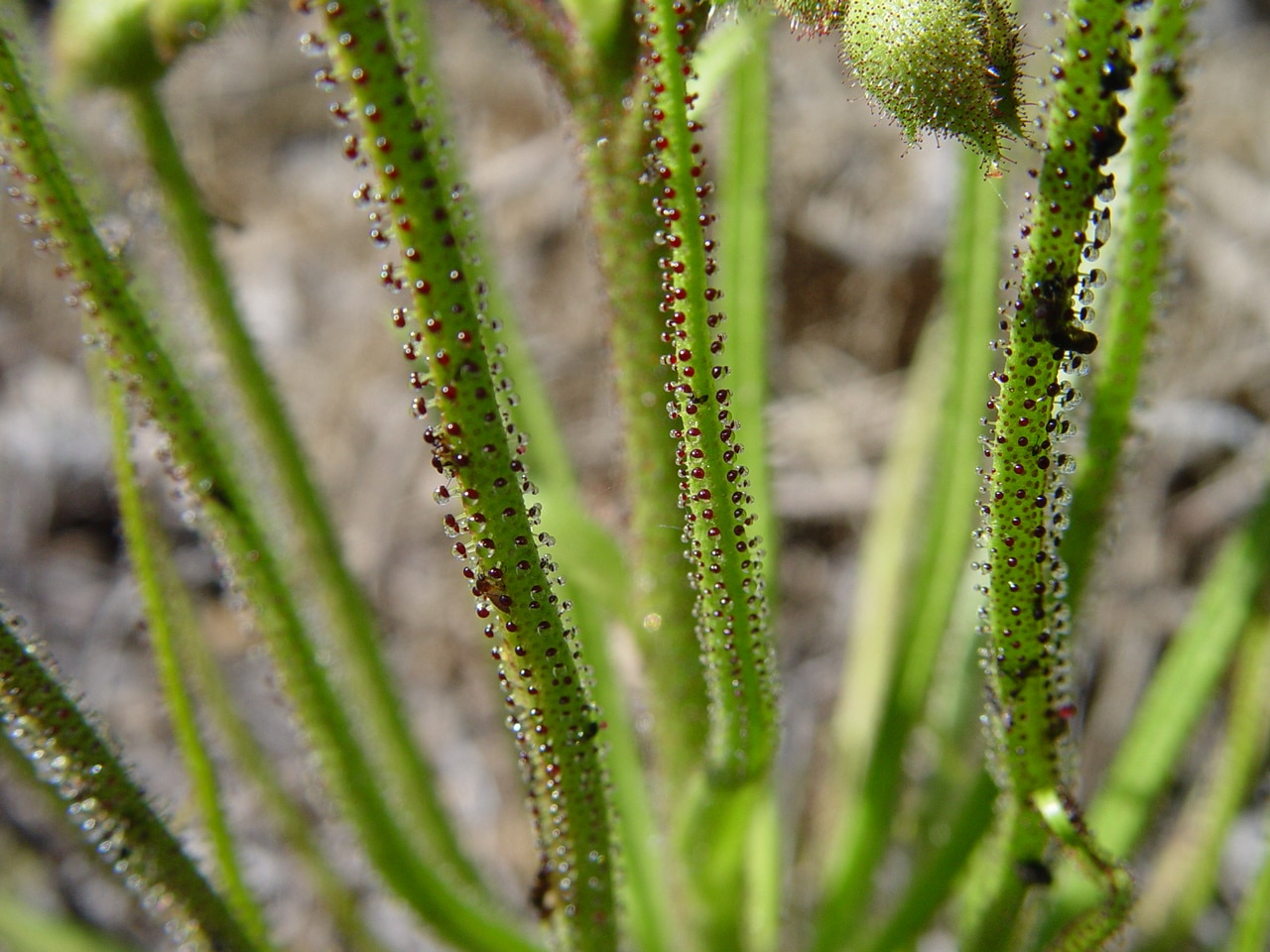
Image – Wikimedia Commons / Lumbar
Plant Drosophyllus lusitanicus It may seem to many that it has been taken from some alien planet. Its leaves are not the common ones, but they look more like greenish stems covered by glands, which are very sticky to mosquitoes, ants and other insects.
In cultivation it is an interesting species, able to withstand the cold much better than other carnivorous plants. But, How do you take care of yourself?
Origin and characteristics of Drosophyllus lusitanicus

Image – Flickr / David Eickhoff
It is one of the few carnivores originating from Spain, specifically from the southwest, as well as from Portugal and Morocco. It develops linear leaves of about 20 to 30 centimeters in length, covered by glandular hairs with the red endwhich secretes a viscous and aromatic substance that serves to attract insects. This substance is also sticky, so no matter how much the insects struggle, they will be trapped, since more and more tentacles will hold it.
Thus, the prey dies soon, and the plant will digest it with the help of digestive glands. Finally, the substances that can be assimilated from the body will be absorbed by the absorbent glands, leaving only the external skeleton of the insect.
But it doesn’t just have an ‘evil’ face: like any carnivorous plant worth its salt, Drosophyllum it produces flowers that, although small, are really pretty for pollinators. These sprout in springon a stem about 40 centimeters high, are yellow in color and are made up of five petals. In addition, they produce a large quantity of seeds.
The total height of the plant is 1,5 meters. Over time it develops a stem that becomes woody, which is why it is considered semi-shrubby.
What are the care you need?

Image – Wikimedia / Michal Klajban
If you want to have a copy, we recommend you take care of it as follows:
Location
It is a carnivore that needs to feel the passing of the seasons, so It must be kept outside, in semi-shade or in full sun. Now, if the nursery where they had it was protected from the king star, do not expose it as soon as you get home to him, because its leaves would burn. Do it little by little and gradually, always in the early morning or at sunset.
Earth
- the garden: grows on sandy and siliceous soils. In its natural state, we find it in heaths, degraded bushes and rocky areas.
- Flower pot: use the following mixture: 40% blond peat + 40% quartz sand + 10% chopped pine bark + 10% perlite (on sale here!).
Another option is 25% of pumice (on sale here!) + 25% off perlite + 25% sand + 25% peat moss.
The pot should be made of plastic, and deep, since the plant has very long roots.
Irrigation
Watering Drosophyllum is the hardest of all. Its root system is long, so that it can survive the Mediterranean drought without problems. It is so well adapted that if it is watered excessively we will lose it.
To avoid it, In addition to using a substrate with excellent drainage, it is advisable to water about twice a week in summer, once a week in spring and once a month in autumn-winter. Rainwater or lime-free water should be used, and it will never be watered by the tray method, but must be watered from above, moistening the substrate.
In addition, you do not have to put a plate under the pot either.
Subscriber
There is no payment. The insects it catches will be its ‘food’.
Multiplication

Image – Flickr / David Eickhoff
The Drosophyllus lusitanicus multiplies by seedsnot without some difficulty. So that they germinate better, they should be passed with sandpaper, and then sown in pots with humid substrate, near a heat source.
Transplantation is difficult, so it is highly advisable to sow a maximum of two seeds in each pot to ensure that more specimens reach adulthood.
Transplant
It is better not to transplant. If it is very necessary, that is, if roots grow out of the drainage holes, it will be done in spring and with care to remove the entire root ball.
Rusticity
Resists weak frosts down to -4ºCbut you must bear in mind that extreme heat hurts it. In summer, the maximum temperature should not be higher than 30 degrees Celsius.
Where to buy?

Image – Wikimedia / Michal Klajban
The carnivorous plant Drosophyllus lusitanicus not easy to find in nurseriesnot even in specialized stores. The seeds take time to germinate, and the growth rate is slow, so when they are put on sale it is normal that the price is higher than the other faster carnivores.
Taking all this into account, we advise you to contact directly with online nurseries specialized in carnivores, or in associations, since on sites like eBay or Amazon it is really difficult to find for sale, especially already grown plants.
What do you think of Drosophyllum lusitanicum? Have you heard of him?
